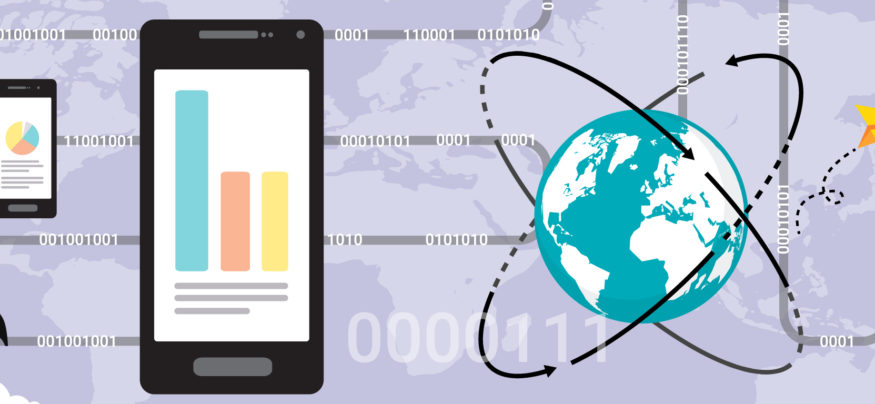As more businesses and individuals turn to mobile communications, the pace of data usage has exploded. In fact, the rate of data consumption is so high, it has put a new word into the popular lexicon — “the zettabyte.”
In its latest forecast, Cisco Systems Inc. predicts global Internet traffic will break one billion terabytes — or a zettabyte — in 2016, and will likely double by 2019, driven largely by consumption via mobile platforms. Due in part to the demands of enterprise IT, global mobile data traffic grew 74 percent in 2015, reaching 3.7 exabytes per month at the end of the year, up from 2.1 exabytes per month at the end of 2014.
Additionally, more than half a billion mobile devices and connections were added in 2015. This brought the global inventory of mobile devices to 7.9 billion, up from 7.3 billion in 2014, Cisco reports.
The rise of enterprise usage plays a major role in this. The global enterprise mobility market will be worth as much as $140 billion by 2020, according to Boston Technology, and Transparency Market Research projects it to rise at almost 25 percent annually from 2015 to 2022. At that pace, the market would have a valuation of $510.39 billion by 2022, up from $86.36 billion in 2014.
Mobile Usage Around the World
Much of this market growth is coming from the embrace of mobile use outside the United States — a trend that will likely continue. Pew Research Center reports that 72 percent of U.S. adults have smartphones. European numbers run only slightly lower: 68 percent in the U.K., 60 percent in Germany, and 49 percent in France.
Less developed economies lag behind. Just 17 percent of adults in India have smartphones, 26 percent in Kenya, and 35 percent in Vietnam. In fact, economic strength and smartphone adoption typically track pretty closely, with Brazil at a middling 41 percent, Australia at a healthy 77 percent, and Ghana straggling at 21 percent, says Pew Research.
Although all these numbers are projected to rise, mobile use is growing fastest in regions presently at the tail end of the pack, where growing economies will likely drive a need for increased mobility in enterprise IT.
A Rise in Mobile Data Consumption
The rapid escalation of data usage parallels the rise of mobile phone adoption by consumers and enterprise users. Cisco estimates that the average amount of traffic per smartphone in 2015 was 929 MB per month, up from 648 MB per month in 2014. The trend will continue, with global mobile data traffic projected to increase over eight times by 2020.
Mobile applications in particular help to account for the big bump in data usage. A study by comScore found that Americans consume the majority of their digital media via mobile applications. Mobile apps account for 52 percent of the time spent using digital media. Combined with mobile web, mobile usage as a whole accounts for 60 percent of time spent, while desktop-based digital media consumption accounts for the other 40 percent.
This flurry of numbers shows two major forces rocketing up in tandem: the steady adoption of smartphones on the enterprise side, especially in less developed nations, and the rise in mobile data consumption to the massive zettabyte mark.
Although the growing prevalence of smartphones is the driving force, the rise in mobile Internet consumption also can be attributed to the steady growth of high-quality mobile content and business apps for enterprise. Streaming music and video on the consumer side, productivity apps, business tools for the enterprise and other advances all drive users to the mobile environment. As enterprise IT shows an increasing interest in mobility, the consumption of mobile data for a range of business needs grows.
From an enterprise perspective, it’s likely that a steadily rising economy will benefit all sides. If measured growth continues on both the domestic and international fronts, the pace of device adoption and data consumption likely will remain on course.
Learn more about how Samsung’s cutting-edge enterprise solutions can help you drive your digital business.







